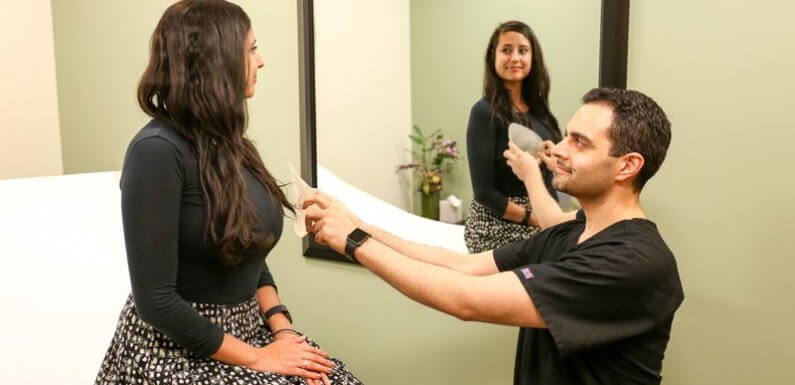
What is Breast Reduction Surgery?
Also referred to as reduction mammaplasty, breast reduction surgery is aimed at helping women achieve a breast size proportion to their body and to reduce discomfort associated with large breasts. It involves removal of excess fat in the breast, glandular tissue and skin.
Large breasts which are not proportional to body may lead to physical and emotional distress. The condition is medically termed as macromastia which results in physical discomfort due to excess weight of breasts. Some women are unable to accomplish their daily tasks due to pain and discomfor
Good Candidate for Breast Reduction Surgery
Women with overly large breasts are the candidates for this surgery. The issue may lead to a number of health and emotional troubles. Apart from issues related to self-image issues, women tend to experience a lot of physical pain and discomfort. The excess weight of breast tissue impairs their ability to lead an active life. Women also suffer from self-consciousness related to large breasts.
You may a candidate for this surgery if:
- You are in good physical health
- You have realistic expectations about the surgery
- You don’t smoke
- You face emotional issues due to excessively large breasts
- Large breasts have restricted your physical activity/day to day activities
- Weight of breasts causes back, neck and shoulder pain
- Shoulder indentations from bra straps
- Skin irritation under breast crease has started to bother you
- You are ready to bear the cost of plastic surgery and have understood the benefits and risks associated to it
Things to Know about Reduction Mammaplasty
- Breast reduction surgery can interfere with some diagnostic procedures
- Piercing of breast and nipple may cause serious infections
- Your ability to breastfeed after reduction mammaplasty may be limited
- You must talk to your doctor if you plan to nurse a baby in future
- The surgery is best done once your breasts are fully developed
- Changes in the breasts during pregnancy may vary the results of an earlier breast reduction surgery
Risks of Breast Reduction Surgery
When and why you should make the decision to have breast reduction surgery is personal. It is important to have a detailed discussion with your surgeon about the advantages and risks prior to the final decision.
Here are some of the possible breast reduction surgery risks:
- Blood clots
- Unsightly scarring
- Infection
- Changes in nipple or breast sensation (temporary or permanent)
- Risks related to anesthesia
- Bleeding (hematoma)
- Poor wound healing
- Unfavorable breast contour
- Irregularities in breast shape
- Skin discoloration
- Swelling and bruising
- Permanent pigmentation changes
- Serious damage to deeper structures (lungs, blood vessels, nerves)
- Breast asymmetry
- Accumulation of fluid
- Excessive firmness of the breast
- Potential inability to breastfeed
- Potential loss of skin/tissue of breast at the site of incisions joint
- Potential, partial or total loss of nipple and areola
- Deep vein thrombosis
- Cardiac and pulmonary complications
- Persisting pain
- Allergies to tape
- Allergic reaction to suture materials and glues
- Allergies related to blood products, topical preparations or injectable agents
- Permanent damage or extermination of fatty tissue deep in the skin (fat necrosis)
- Likelihood of revision surgery
Breast reduction is performed to address medical issues associated to large breasts. Patients who do not show symptoms of macromastia but are unhappy with the size of their breasts may also proceed with this procedure. Most patients choose to go for this surgery for cosmetic reasons.
